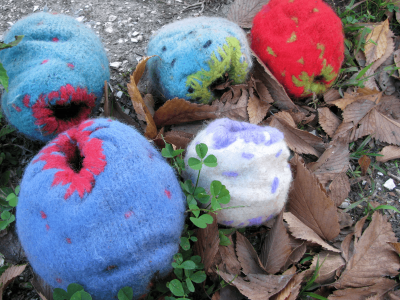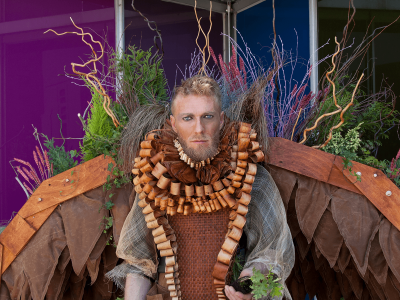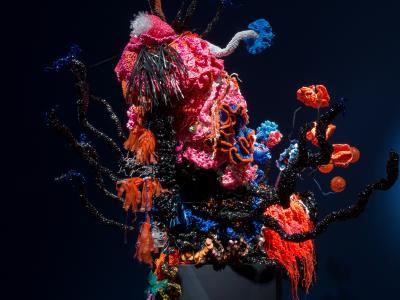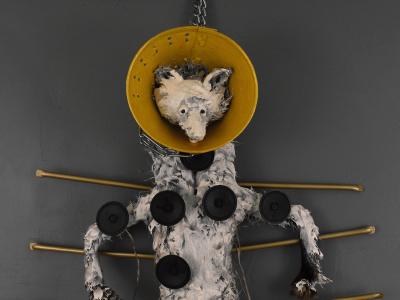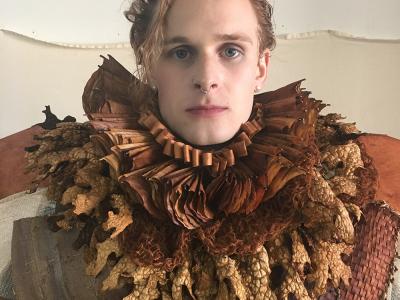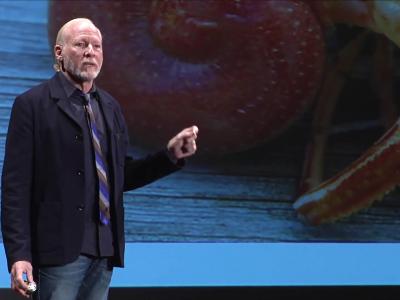Modest Forms of Biocultural Hope
Can species thrive together? Can we learn from nature to remediate environmental problems? Is hope possible in the Anthropocene?
Explore the complex relationships between biology and culture
Western Gallery’s fall exhibition focuses on these questions as well as creative efforts to address ecological concerns. Four art installations explore the complex relationships between biology and culture. A section, titled “What Would Nature Do?” introduces the nature-based design approaches of Biomimicry and Permaculture. An ongoing and evolving installation project by students in an Art and Ecology class at Western addresses a compelling question: what if we understood the universe not as a collection of objects, but as a communion of subjects?
The projects brought together in the exhibition present novel but grounded ways of thinking about ecological problems. Rather than dejection at the enormity of the challenges, they offer concrete and creative efforts. Rather than sweeping geoengineering schemes, they offer modest forms of biocultural hope. What the ecological thinker Donna Haraway has written about one of the projects (Wertheim’s Crochet Coral Forest) is true of them all: “[These are] not projects of melancholy and mourning. Theirs are figures of response-ability.”
Eben Kirksey
The exhibition title—“Modest Forms of Biocultural Hope”—comes from an essay by the curator, artist and ethnographer Eben Kirksey. While powerful forces have tried to appropriate the idea of hope, equating it to human-centered blanket “solutions” to global warming and extinction, Kirksey has argued for a multispecies approach. Rather than focusing on individual species, he explores the intersections of all lifeforms, searching for clues in their entangled relations. Practical and concrete acts of interspecies care can serve as anchoring points for collaborative action, he suggests, if they are grounded in biocultural possibilities and open-ended pursuit of livable futures. To Kirksey, even in the blasted landscapes of ecological disasters, toxic specters can be transformed into figures of hope.
Can art create hope in the face of helplessness?
John Feodorov’s sculpture Oracle presents the problem that Kirksey and the artists and designers in the exhibition address. Oracle speaks of the helplessness and hopelessness that perhaps most of us experience in the face of global warming and ongoing disasters. But this is a contradictory statement because the Oracle does not speak at all. The loudspeakers that cover the choked and pierced animal are disconnected. It is this lack of connection that leaves us helpless. The connection to Nature has been severed; the myth of an oracle spent.
If the environmental devastation caused by human behavior has robbed Nature of its autonomy, thus precluding communion and faith in natural recovery, can art create hope? Is hope even possible in the Anthropocene? These are the questions and conditions that the artists Margaret and Christine Wertheim, Deanna Pindell, and Nicole Dextras grapple with. Instead of offering grand narratives or technological solutions, the artists’ advance performative programs of action that reveal the complex relationships between biology and culture.
Margaret and Christine Wertheim’s Crochet Coral Forest project combines handicraft and community art practice with marine biology and mathematics to address the escalating problem of oceanic plastic trash. As a response to the horror of the Great Pacific Garbage Patch, they have brought attention to our profligate waste and consumerist addictions by crocheting beautiful coral reefs from used plastic bags. But the project isn’t limited to bringing attention to the problem. It is a form of ecological activism and has involved thousands of people from all over the world. To quote Donna Haraway again, “By proposing fundamental questions about extinction and survival and response through material figuring, both the crocheting and the installations create publics that learn to care, to make a difference.”
As a citizen scientist and community-engaged artist, Deanna Pindell focuses her installations and public art projects on complex forest and water quality concerns. She proposes functional, remedial solutions when possible. Her installation, “The Thneeds Re-Seed” suggest sources of hope through intimate acts of interspecies care. In Pindell’s own words, it is “a sculptural remediation strategy in collaboration with Bryum Argenteum (Silvery Bryum) moss. As the ‘first responder’ in healing deforested areas, mosses establish basic support systems for the diverse successional species necessary in the restoration of devastated woodlands… Recycled wool sweaters are felted into colorful hollow balls; a perfect substrate for moss, a safe little nesting habitat for critters, munchable protein for insects.”
Nicole Dextras’ installation, Forest Warrior, consists of a cloak on wheels that functions as a garden and transforms into a portable shelter. Dextras builds her sculpture around the narrative of a botanical conservation anti-superhero wandering the landscape, protecting native plants. Dextras' aim is to remind us of our interdependence with other life forms. The work supports a sustainable lifestyle for new urban nomads (or eco drifters) with a structure that allows them to grow a garden, and supports the building of community through public engagement. It is a vehicle for interaction, not only with other humans but with plants and other species.
The “Salish Wonder Room” is an evolving and changing project by students in Professor Cynthia Camlin’s Fall 2018 Art and Ecology class. The project tracks the students’ research and discoveries as they learn about organisms of the Salish Sea region and respond to scientific research, field study, indigenous practices, and contemporary art. A cabinet of curiosities, also known as “Wunderkammer” or “wonder room,” creates context for a compelling question that the ecotheologian Thomas Berry has asked: what if we understood the universe not as a collection of objects, but as a communion of subjects? If the ahistorical collection of objects and specimens in the Wonder Room strikes us today as neither scientific nor ecologically aware, we then understand other species not only as objects to be collected, preserved and studied, but as living beings who are themselves holders of knowledge.
Designing sustainability
The design section “What Would Nature Do?” introduces the nature-based approaches of Biomimicry and Permaculture. Both look to nature's model for inspiration—the first for invention and engineering of design solutions, and the latter for sustainable development of agricultural ecosystems.
The permaculture designer, environmental educator and illustrator Paul Kearsley has made a large-scale display illustrating the design philosophy of permaculture, including how it follows nature’s own patterns.
Biomimicry
Three award winning Biomimicry projects that have helped improve wind power generation are presented.
- Bumps on the flippers of humpback whales led to a discovery of more-stable and aerodynamic turbine blade design that the Toronto-based company WhalePower manufactures.
- Inspired by the kingfisher’s long slender beak and the way maple leaves fall, the Toronto-based firm BiomeRenewables has developed a nose cone for wind turbines that decreases turbulent flow over the turbine, thus increasing power output.
- Learning from the movement of schools of fish, the Dabiri Lab at Stanford University has shown how multiple Vertical Axis Wind Turbines can be arranged to increase the power outlet of each turbine.
Four impressive biomimicry projects developed by WWU industrial design students are also presented. Two of the project propose ways to reduce wasteful air-conditioning by emulating haw plants preserve energy. To reduce freshwater consumption in agriculture, the third project looks at how saltwater plants produce freshwater by salt removal. And to develop energy efficient alternative to drywall production, the fourth project looks at how wasps build their homes.
Acknowledgements
Thanks go out to Jennifer Riddell, who has been a great advisor throughout the curatorial process; Sophia Greif, who designed the “What would Nature Do?” section; and to my colleagues at Western who have advised me on the exhibition: Cynthia Camlin, Department of Art and Art History; Arunas Oslapas, Industrial Design; Johnathan Riopelle, Western’s Sustainable Action Fund; David Sattler, Department of Psychology, and Grace Wang, Huxley College of the Environment. Thanks also to our preparatorial team Hunter Long, Cejay Johnson, and Jess Irvine.
Hafthor Yngvason, Curator
Further exploration
This exhibition coincides with three other local exhibitions on ecology:
- Endangered Species: Artists on the Front Line of Biodiversity at the Whatcom Museum in Bellingham (September 8, 2018 – January 6, 2019).
- Boneyard and Bloom: Paintings by Cynthia Camlin at the Jansen Art Center in Lynden (September 6 – November 30, 2018).
- Surge at MoNA in La Conner (October 6, 2018 - January 7, 2019).
Artists
Nicole Dextras, John Feodorov, Deanna Pindell, Margaret and Christine Wertheim. Design section: Paul Kearsley, BiomeRenewables, Dabiri Lab, and WhalePower.
Exhibition Events
Events and exhibitions are free and open to the public unless stated otherwise. Visitor information
